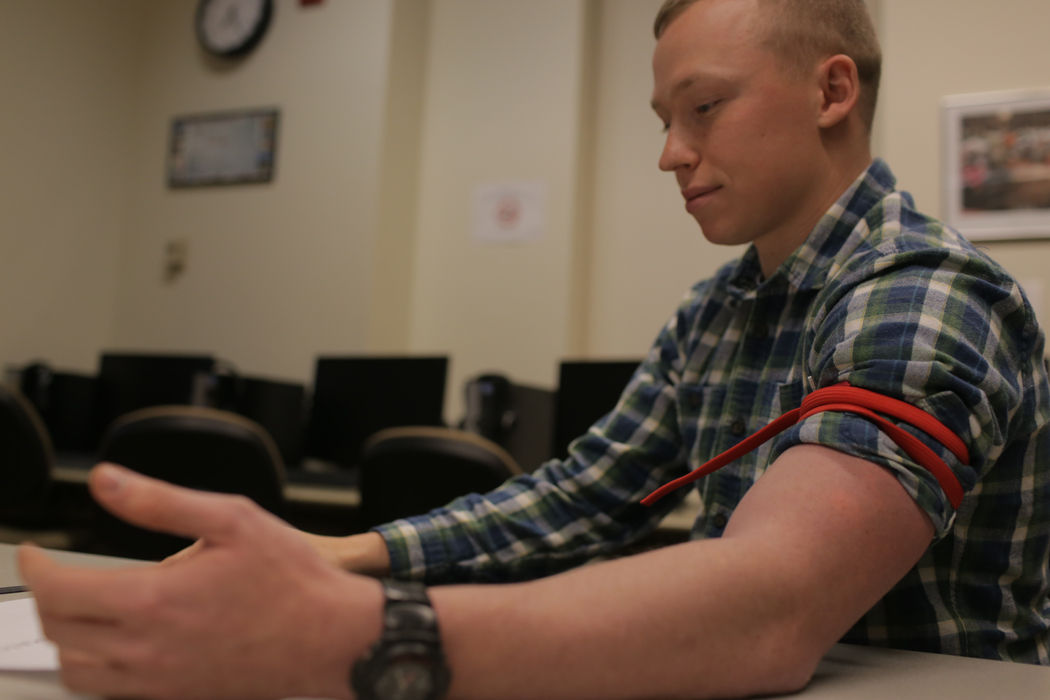Bone marrow match could save life
WSU student Jared Haeg discovered he is a bone marrow match for someone through the Be The Match program.
February 5, 2016
Giving back to the community has always been an important aspect in WSU student Jared Haeg’s life.
After participating in a drive to get students to participate in the national Be The Match bone marrow donor registry 10 months ago, he received a call that he was matched to a patient.
“Bone marrow transplants are the only cure so far for blood cancers, leukemia, lymphoma and myeloma,” said Debra Pastore, adviser for the Be The Match club on campus. “When somebody’s a match, they are actually saving that person’s life.”
According to the Be The Match website, about 1 in 540 Americans in the registry go on to donate bone marrow or blood stem cells to a patient. Pastore said the club has registered roughly 300 students through their drives on campus.
“It’s pretty fascinating to hear that I’m already a potential match in just 10 months,” said Haeg, a senior majoring in political science and Asian studies. “Just as soon as I heard, I literally got weak in the knees and just wanted to collapse and thank the lord and think how I’ve been blessed by this amazing opportunity to help someone who really needs help.”
Pastore’s sister had blood cancer and she was a perfect match. According to the Be The Match website, 70 percent of patients with blood cancer do not have genetic matches in their family. Patients who do not have matches in their family must depend on donations from genetically matched strangers.
“It gives hope to the patients, I can’t imagine waiting for that call,” said Benjamin Eilts, event coordinator for the club and a sophomore majoring in electrical engineering.
Pastore’s sister passed away in 2013 and her last request was that more people be in the registry. Pastore started the beginning stages of the Be The Match club on campus. She said college students are a good group to work with because the ideal donor is healthy and between the ages of 18 and 44.
Eilts said registering during a drive is fairly simple. Students just need to fill out general information paperwork and get a cheek swab. Once it’s sent in to the Be The Match headquarters, they are then a part of the bone marrow registry.
“It’s just a cheek swab and if they do have a match, it’s often just circulating blood to get stem cells,” said Eilts. “There are a good percentage of people who are afraid. When they think of bone marrow, they think of a gruesome process.”
The next step in the donation process for Haeg is blood tests. Haeg will receive tests to make sure he does not have any infectious disease and ensure he is a perfect genetic match to the patient. If he passes the safety check, he will be able to donate in one of two ways.
He can donate through a surgical procedure, which is rare, or through a peripheral blood stem cell donation. The second is much more common and is similar to the process of donating blood, though it takes a little longer.
Haeg anticipates that he will be able to go through the procedure within four or five months. Right after graduation he will be commissioned as an officer into the U.S. Marine Corps.
“Giving back to the community is a really important aspect of how I view myself as a citizen and as someone who is going into a position of leadership, it is important to give back to others,” Haeg said.










